Nitrous Oxide


What is it?
Nitrous oxide is a dissociative, typically used for sedation and pain relief. It is also a dissociative drug, which causes a dissociative sensation in the mind and body. Basically, it means we’re trippin’! It is also a food additive when used as a propellant for whipped cream. However, cartridges from household products like whipped cream are often used for self-administered nitrous oxide ingestion. When used in this form, the drug is commonly referred to as nangs, laughing gas, nitro, whippets, hippy crack, buzz bomb and balloons.
Taking nitrous oxide through gas cartridges (most often called nangs) is usually done by expelling the gas into a balloon first before inhaling it and exhaling it, and doing so repeatedly, but it can be inhaled directly.
It can also be inhaled directly and its effects are felt immediately for about a minute or so.
What are the effects?
The effects are felt almost immediately and last for about a minute. Inhaling directly from a canister can cause burns due to intense cold and damage the lungs so using a balloon can reduce the possibility of this happening.
- A rush of euphoria
- Numbness of the body
- Sedation
- Giddiness
- Uncontrolled laughter
- Uncoordinated movements
- Blurred vision
- Confusion
- Dizziness and/or light-headedness
- Sweating
- Feeling unusually tired or weak
- Memory loss
- Vitamin B12 depletion (long-term depletion causes brain and nerve damage)
- Ringing or buzzing in the ears
- Incontinence
- Numbness in the hands or feet
- Limb spasms
- Potential birth defects (if consumed during pregnancy)
- Weakened immune system
- Disruption to reproductive systems
- Depression
- Psychological dependence
- Psychosis
If a large amount of nitrous oxide is inhaled it can produce a loss of blood pressure, fainting, and heart attack.
Overdose
It’s possible to overdose from inhaling nitrous oxide. If we take too much we risk falling unconscious and/or suffocating from a lack of oxygen – known as hypoxia… so, there’s that to avoid! Knowing the signs of overdose helps keeps us and others safe, and when we might need to call an ambulance. Watch out for these symptoms and call 000 in an emergency:
Irritation of the nose, eyes and throat
Wheezing, coughing, or difficulty breathing
Choking or tightness in the chest
Seizures
Bluish or greyish fingers, toes and lips
Rapid heart rate
Psychosis and hallucinations
Mixing with other drugs
The effects of nitrous oxide weed with other drugs – including over-the-counter or prescribed medications can be unpredictable. While there are no highly dangerous interactions between nitrous oxide and other drugs, there is a range of unsafe interactions to be cautious of, and they can be found at TripSit. Find out more about mixing nitrous with other drugs at the Australian Drug Foundation.
HIV Medications
The interactions between nitrous oxide and antiretroviral medications are not well known. There’s currently no evidence to suggest that nitrous oxide use directly reduces the efficacy of antiretroviral medications. If some new research comes to light, then we’ll update this section and let you know.
We did find that prolonged use of nitrous oxide in combination with Zidovudine warrants attention for the possible side effects that may result. Patients are recommended to consult with an HIV specialist.
The interactions between nitrous oxide and PrEP and PEP are not well known. There’s currently no evidence to suggest that nitrous oxide use directly interacts with these medications or reduces their efficacy. We’ll keep looking and update you if any new research comes to light.
To learn about the interactions between specific HIV medications and nitrous oxide head to Liverpool HIV Drug Interactions Checker.
Hormones
There’s currently no evidence to suggest that nitrous oxide use directly reduces the efficacy of HRT. We’ll keep looking and update this information if something new comes to light.
The interactions between Nitrous Oxide and HRT are not well known. Progesterone and Cyproterone Acetate can have sedative effects, so we may be particularly tired, fatigued or sleepy during or after taking Nitrous Oxide.
For more information about nitrous oxide head to the Australian Drug Foundation.
DISCLAIMER:
The information given on this page is not medical advice and should not be relied upon in that way.